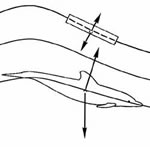5/26/2015·
Machinery
Forensic Clues: Agricultural Machinery - PTO Hazards
By:
John Ryan, BSME, PE
Every year there are thousands of debilitating injuries and deaths on farms. Many of these are related to power take-off's (PTO's). PTO shafts are used to power various farming implements, from mowers, hay balers, augers, and many other types of farming machinery. The PTO shaft was invented in the 1930's. The PTO shaft is essentially a shaft powered by the tractor engine that rotates at high speeds, providing power for a wide array of implements. While this provides a convenient source of power to drive farm implements, serious accidents can occur due to entanglement in PTO's. PTO's must be properly equipped with guards including master shields which covers the stub shaft and universal joint. These shields prevent inadvertent contact with the rotating machinery. Contact with unshielded rotating PTO parts can instantly pull a person into the PTO, causing catastrophic damage.















